Opening Times and Prices | Fundació Gala
BOOKING IN ADVANCE IS RECOMMENDED
| PERIOD | TICKET OFFICE OPEN |
|---|---|
| 1/1/2023 – 30/6/2023 and 1/9/2023 – 31/12/2023 | 10:30 -17:10 |
| Closed January 1 and Mondays except: April 3 and 10; May 1, 8 and 29; September 11 | |
| 1/7/2023 – 31/8/2023 | 9:00 – 19:15 |
| Open every day |
| TICKETS ONLINE* | |||||
|---|---|---|---|---|---|
| TICKET TYPES | PERIOD | PRICES | INCLUDES | DESCRIPTION | |
| GENERAL | 01/01 – 30/06 | 17 € | Dalí · Jewels exhibition | ||
| 01/07 – 31/08 | 20 € | ||||
| 01/09 – 31/12 | 17 € | ||||
| REDUCED | 01/01 – 30/06 | 11 € | Dalí · Jewels exhibition | Students, pensioners over 65, with the appropriate documentation. |
|
| 01/07 – 30/09 | 13 € | ||||
| 01/10 – 31/12 | 11 € | ||||
| INDIVIDUALS + GUIDED VISIT | In english, french, catalan & spanish according to the schedule | ||||
| GROUPS (+25 PERS) | 11 € | Dalí · Jewels exhibition | Reservation required. | ||
| SCHOOL GROUPS (without guided visit) | 11 € | Dalí · Jewels exhibition | Reservation required. | ||
| SCHOOL GROUPS (with guided visit. Guided visit price not included) | 6 € | Reservation required.For Further information about guided visit for schools contact with cinzia.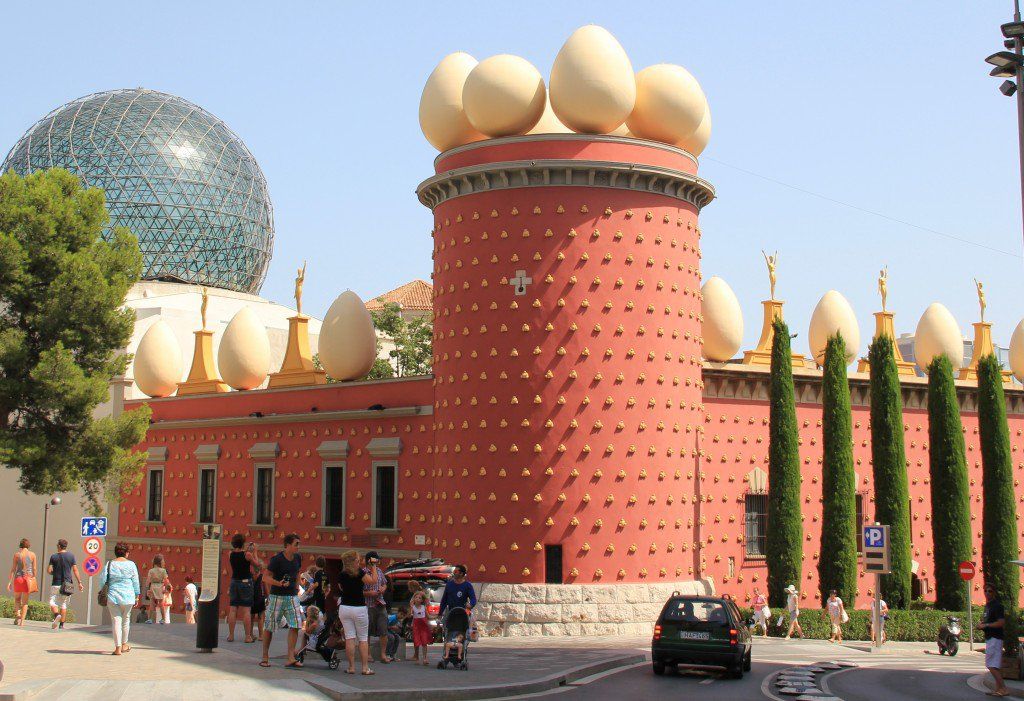 [email protected] [email protected] |
|||
|
* We recommend that you always check the availability of tickets if you don’t book online
ONLINE PURCHASE HAS ADVANTAGES: TICKET OFFICE: +1€ PER TICKET
|
|||||
| Contact Information | |
|---|---|
| TELEPHONE | +34 972 677 500 |
| FAX | +34 972 501 666 |
| RESERVATION |
reserves(ELIMINAR)@fundaciodali.org
|
| EDUCATIONAL SERVICE | [email protected] |
|
IMPORTANT
Booking in advance is recommended.
The exhibition rooms will start to close 15 minutes before the official closing time.
The Dalí Theatre-Museum entrance ticket includes free entry to the Empordà Museum and 30% off the admission price at the Toy Museum of Catalonia.
|
| Free Entrance |
|---|
|
Children aged 8 and under.
Members of the associations Friends of the Dalí Museums, if showing the appropriate documentation*
Associació de Museòlegs de Catalunya, ICOM and journalists, only if showing the appropriate documentation*
Museum Staff*
Please check special prices on accessibility page
*Documentary proof must be presented when tickets are collected at the entrance. Reduced entrance is not available for online booking. For any doubt contact with: reserves(ELIMINAR)@fundaciodali.
|
Contact with us
Dalí Theatre-Museum. History | Fundació Gala
The world’s largest surrealist object
Inaugurated in 1974, the Dalí Theatre-Museum rises on the remains of the former Municipal Theatre of Figueres and is considered to be the last great work of Salvador Dalí. Everything in it was conceived and designed by the artist so as to offer visitors a real experience and draw them into his unique and captivating world.
The Dalí Theatre-Museum’s collection allows the visitors to capture the artistic journey of Salvador Dalí (1904-1989) through a broadspectrum of works. The route around the rooms allows visitors to capture his first artistic experiences, surrealism, nuclear mysticism and his passion for science, guiding them tothe works of the last part of his life.
A visit to the museum is a unique experience, allowing visitors to experience and enjoy the genius’s works and thoughts.
Origins and creation
The embryo of the Theatre-Museum project started at the beginning of the ‘sixties. Ramon Guardiola, mayor of Figueres at the time, asked Salvador Dalí to donate a work for the Museu de l’Empordà. Dalí’s reply came quickly: he would donate to Figueres not just a single work, but an entire museum:
“Where, if not in my own town, should the most extravagant and solid of my work endure, where if not here? The Municipal Theatre, or what remained of it, struck me as very appropriate, and for three reasons: first, because I am an eminently theatrical painter; second, because the theatre stands right opposite the church where I was baptised; and third, because it was precisely in the hall of the vestibule of the theatre where I hosted my first exhibition.
The place in which the Dalinian project was to be located, as a specific wish of the artist, was the former Municipal Theatre of Figueres. Destroyed in a fire at the end of the Spanish Civil War, the building had been reduced to its peripheral structure. The ceiling of the orchestra pit had collapsed; of the boxes there remained only the access corridors to them and to the stage, the arch of the stage mouth and the side stores; the entrance hall and the rest room were the only parts that remained more or less intact. The artist planned to take advantage of the spectral charm offered by the ruins of the former theatre in order to house the future museum.
From the ‘seventies onwards, Dalí devoted his entire attention to the museum project, taking part in it and designing its tiniest details, until it became real with the official inauguration of the Dalí Theatre-Museum on 28 September 1974. One of the most noticeable features of the museum, the transparent reticular-shape like a geodesic dome that crowns the building, was entrusted by Salvador Dalí to the Murcian architect Emilio Pérez Piñero (1935-1972).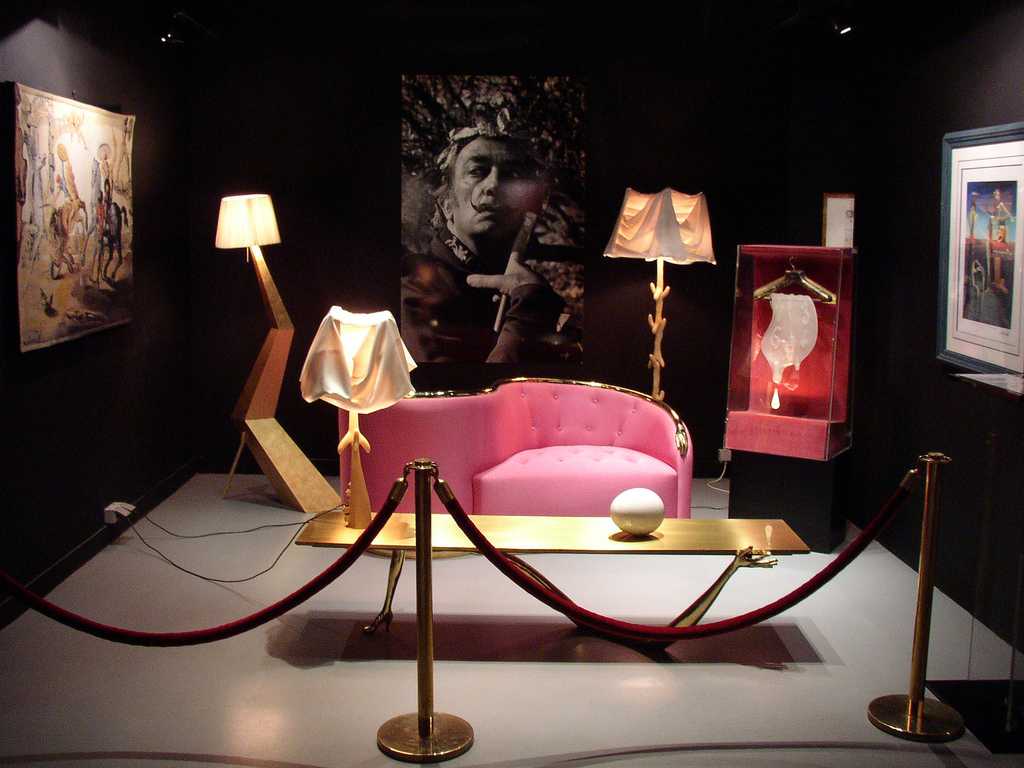
The Museum today
The various collections of the Fundació Gala-Salvador Dalí include all types of works of art: paintings, drawings, sculptures, engravings, installations, holograms, stereoscopes, photography, etc. Of them, some 1,500 are on exhibition at the Dalí Theatre-Museum in Figueres.
The world’s largest surrealist object
Inaugurated in 1974, the Dalí Theatre-Museum rises on the remains of the former Municipal Theatre of Figueres and is considered to be the last great work of Salvador Dalí. Everything in it was conceived and designed by the artist so as to offer visitors a real experience and draw them into his unique and captivating world.
The Dalí Theatre-Museum’s collection allows the visitors to capture the artistic journey of Salvador Dalí (1904-1989) through a broad spectrum of works.
Visiting this museum is a unique opportunity to experience and enjoy the work and thought of a genius. In the words of Dalí himself: “It’s obvious that other worlds exist, that’s certain; but, as I’ve already said in many other occasions, these other worlds are inside ours, they reside on earth and are precisely at the centre of the dome of the Dalí Museum, which contains the new, unsuspected and hallucinatory world of Surrealism”.
Origins and creation
The embryo of the Theatre-Museum project started in the early sixties. Ramon Guardiola, mayor of Figueres at the time, asked Salvador Dalí to donate a work for the Museu de l’Empordà. Dalí’s reply came quickly: not only would he donates an artwork to Figueres, but also an entire museum:
“Where, if not in my own town, should the most extravagant and solid of my work endure, where if not here? The Municipal Theatre, or what remained of it, struck me as very appropriate, and for three reasons: first, because I am an eminently theatrical painter; second, because the theatre stands right in front of the church where I was baptised; and third, because it was precisely in the entrance hall of the theatre that I hosted my first exhibition.
The place where the Dalinian project was to be located -upon specific wish of the artist- was therefore the former Municipal Theatre of Figueres. Destroyed in a fire at the end of the Spanish Civil War, the building was left to its peripheral structure. The ceiling of the orchestra pit had collapsed; of the boxes, only the access corridors remained, and of the stage, only the arch of the stage and the side stores; the entrance hall and the rest room were the only parts that remained more or less intact. The artist wanted to take advantage of the spectral charm offered by the ruins of the former theatre to house his future museum.
From the seventies onwards, Dalí devoted his entire attention to the museum project, taking a huge part in it and designing its every detail, until it became real with the official inauguration of the Dalí Theatre-Museum on 28 September 1974. One of the most noticeable features of the museum was the transparent reticular structure shaped like a geodesic dome that crowns the building.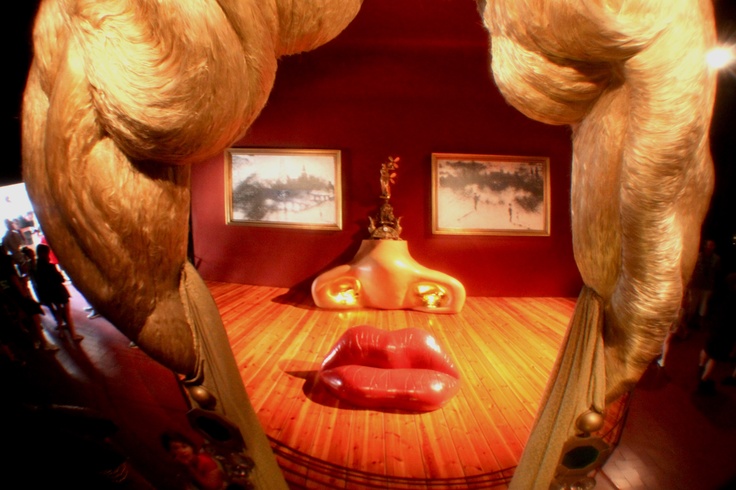
The Museum today
The various collections of the Gala-Salvador Dalí Foundation include all types of works of art: paintings, drawings, sculptures, engravings, installations, holograms, stereoscopes, photography, etc. Among them 1,500 works are exhibited at the Dalí Theatre-Museum of Figueres.
The Dalí Theatre-Museum consists of three clearly differentiated museum areas offering the visitors an unguided andpersonal route across the various galleries:
1) The Theatre-Museum as such, refurbished from the old fire-damaged municipal theatre, converted into the Theatre-Museum based on the criteria and design of Salvador Dalí himself. This part of the museum forms a unique artistic object in which each element is an inseparable part of the whole.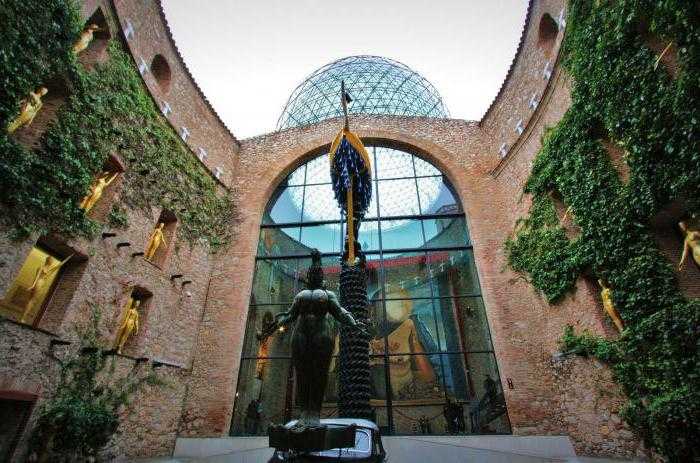
2) The group of galleries resulting from the progressive extensions of the Theatre-Museum, in which Dalí’s personal intervention is superficial or non-existent. These galleries contain many works from the artist’s legacy- stereoscopic works, installations, and anamorphisms-, as well as the Foundation’s new acquisitions.
3) The Dalí·Jewels exhibition rooms, inaugurated in 2001, which contain the thirty-seven gold jewels and precious stones from the former Owen Cheatham collection, in addition to two jewels made later and the prior designs made by the painter.
The Dalí Theatre-Museum is home to a wide spectrum of works that recounts the artistic trajectory of the Empordà county artist, ranging from his first artistic experiences (impressionism, futurism, cubism, etc.) and his surrealist creations, to the last years of his life. Some of the most outstanding works on display are Self-Portrait with l’Humanité (1923), Port Alguer (1924), The Spectre of Sex-Appeal (1932), Portrait of Gala with Two Lamb Chops Balanced on Her Shoulder (1933), Soft self-portrait with grilled bacon (1941), Poetry of America / The Cosmic Athletes (1943), Galarina (1944-45), The Basket of Bread (1945), Leda Atomica (1949) and Galatea of the Spheres (1952), among many others.
We should also highlight the set of works the artist created expressly to be on permanent exhibition at the museum, works that range from paintings and sculptures to complex and monumental installations. Among them are the Mae West Room, the Wind Palace gallery, the Monument to Francesc Pujols and the Rainy Cadillac ( that you can see in our virtual visit).
Aside from Salvador Dalí’s works, there are works by other artists that the painter invited to be exhibited in his museum, such as Antoni Pitxot and Evarist Vallès, accompanied by other artist from the painter’s own private collection, such as El Greco, Marià Fortuny, Modest Urgell, Ernest Meissonier, Marcel Duchamp, Gerard Dou and Bouguereau. In various galleries of the Theatre-Museum we can also find works by John de Andrea, Wolf Vostell, Meifrén and Ernst Fuchs. Since Salvador Dalí death in 1989, the crypt where he is buried can also be visited at the centre of the museum. This area was remodeled in 1997 to exhibit a collection of gold jewels designed by the artist.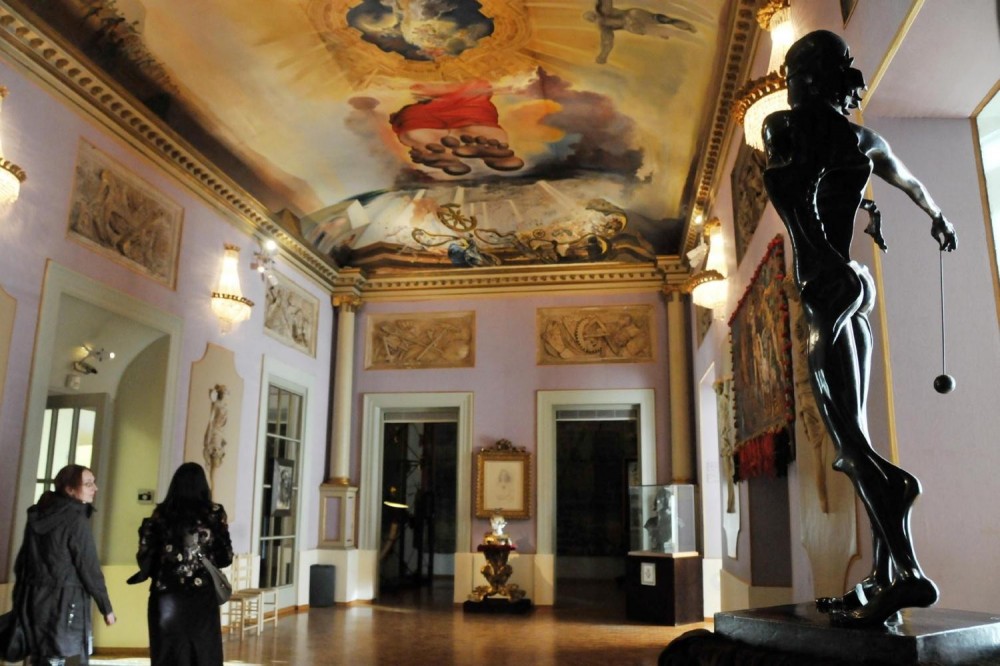
Salvador Dali Museums. Spain in Russian
There are three museums in the famous artist’s birthplace in Catalunya: the Dalí Theatre-Museum in Figueres, the Salvador Dali House-Museum in Portligat and the Gala Dalí Castle in Pubol.
Dalí Theater Museum in Figueres
The idea of creating a museum was born in 1961. The newly elected mayor of Figueres asked the illustrious native to donate one of his works to the city. Dali decided to donate the museum. And not just a museum, but a theater-museum. Now the theater-museum is the largest surreal exhibit in the world and one of the most visited museums in Spain.
Dali took up the reconstruction of the old theater, destroyed during the Spanish Civil War. A giant dome was erected over the stage, the auditorium was divided into sectors to present works of different genres. Dali himself painted the entrance foyer, depicting himself and Galla washing gold in Figueres.
The exposition of the museum allows you to trace the entire artistic path of the maestro: from impressionism, futurism, cubism to surrealism. It also features works by other artists and Dali’s personal collection of works by El Greco and Marcel Duchamp. In 2001, the Dali-Hoyas jewelry exposition was opened, which includes thirty-nine works made of gold and precious stones, as well as about thirty drawings and design sketches.
Museum opening hours: from November 1 to February 28 from 10:30 to 18:00, admission is allowed until 17:15; from March 1 to June 30 from 9:30 to 18:00, entry allowed until 17:15; from June 1 to September 30 from 9:00 to 20:00, admission is allowed until 19:15; from October 1 to October 30 from 9:30 to 18:00, admission is allowed until 17:15.
The museum is closed: January 1 and December 25, all Mondays from October 1 to May 31, except for holidays and holiday eves and December 24. From June 1 to September 30, the theater-museum is open seven days a week.
Entrance tickets: 11 euros for adults (including the jewelry exhibition), 8 euros for reduced prices (for pensioners, disabled people, students and the unemployed) and 7 euros for groups of 25 people or more. In the latter case, a preliminary reservation is required on the website http://www.salvador-dali.org.
Usually in August of each year, the museum hosts night visits from 10:00 pm to 1:00 am, with audio-visual accompaniment and a glass of champagne offered to each visitor on the indoor terraces.
Salvador Dalí House Museum in Cadaqués (Portligat)
The museum is housed in the house where Salvador Dali lived and worked.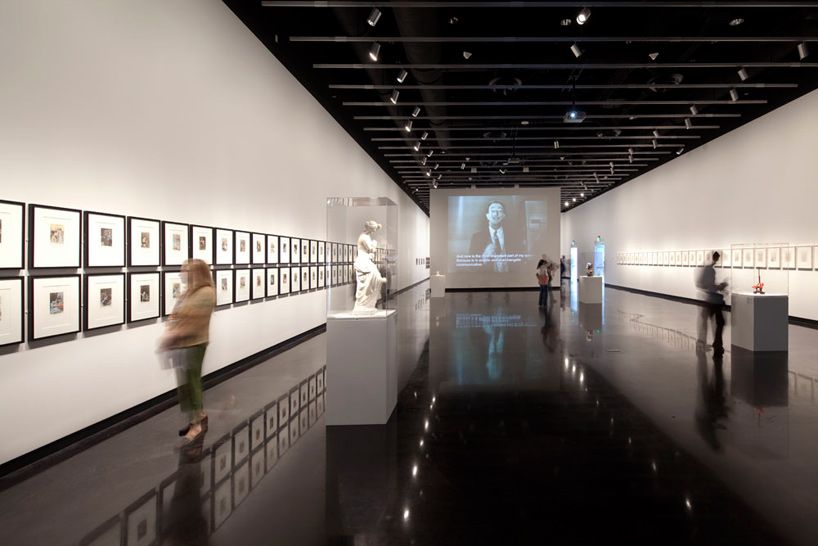
The Salvador Dalí House Museum was opened to the public in 1997. Originally a simple fisherman’s hut, it grew by absorbing neighboring houses, and finally, according to Dali’s design, ceased into a real labyrinth of rooms, stairs and corridors, an example of a surreal house. Nevertheless, the unusual forms of the ensemble are in perfect harmony with the surroundings. Visitors can see the artist’s studio, library, garden, living rooms.
In 1998, the Department of Culture of the Government of Catalonia, the house-museum was declared a national cultural and historical monument.
Museum opening hours: from 1 to 6 January from 10:30 to 18:00, admission is allowed until 17:10; from January 7 to February 11 the museum is closed; from February 12 to June 14 from 10:30 to 18:00, admission is allowed until 17:10; from June 15 to September 15 from 9:30 to 21:00, admission is allowed until 20:10; from September 16 to December 31 from 10:30 to 18:00, admission is allowed until 17:10.
From July 15 to September 15 the museum is open seven days a week. Non-working days: January 1 and December 25, all days from January 7 to February 11, all Mondays from 9February to June 14 and from September 16 to December 31, excluding holidays and holiday eves.
Entrance tickets: 10 euros adult, 8 euros reduced (for pensioners, disabled people, students and the unemployed). Children under 8 years old visit the museum for free. Pre-booking required on 972 251015 or email [email protected], or visit http://www.salvador-dali.org.
Castle Gala Dali in Pubol
Not far from Figueres, in the small village of Pubol, there is a 12th-century castle given by Salvador Dali to his wife and the Gala museum. The artist was the author of the interior design of the castle. It contains the works of the great surrealist, photographs, household items designed by Dali, a collection of Gala toilets from famous couturiers and created by Dali himself, and much more.
There is a small exhibition hall in the castle, where small seasonal exhibitions are organized. Dali’s small garden was artificially enlarged due to optical illusions. The narrowing alley that goes into perspective, at the end of which a small statue is installed, seems very long, but in fact it is an optical illusion. Among the thickets of the garden, spider-legged elephants are harmoniously located, which can be found in miniature form in the jewelry room of the theater-museum in Figueres.
Museum opening hours: from March 15 to June 14 from 10:00 to 18:00, admission is allowed until 17:15; from June 15 to September 15 from 10:00 to 20:00, admission is allowed until 19:15; from September 16 to November 1 from 10:00 to 18:00, admission is allowed until 17:15; from November 2 to December 31 from 10:00 to 17:00, admission is allowed until 16:15.
The museum is closed on January 1, December 24 and December 25, from January 1 to March 14, all Mondays from March 14 to June 14 and from September 16 to December 31, except for holidays and holiday eves.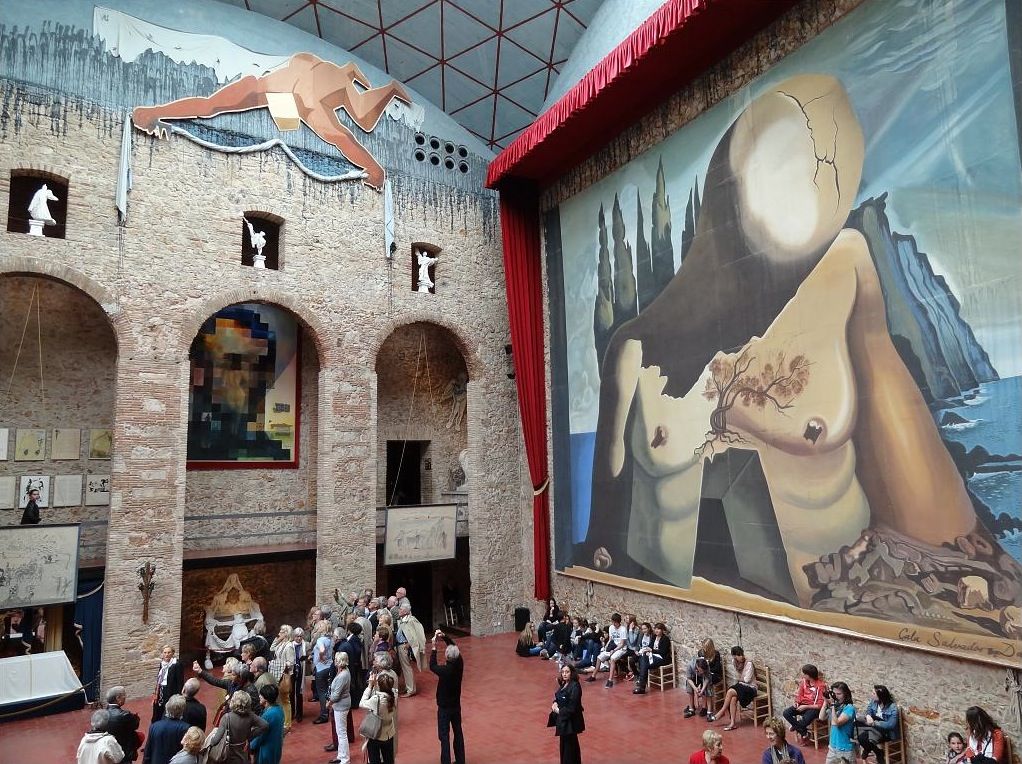
Entrance fees: 7 euros adult and 5 euros reduced (for students, pensioners, disabled and unemployed people, and groups of more than 30 people. Guided visits require mandatory reservations by calling 972488655. Tickets can be purchased at http://www.salvador -dali.org
Salvador Dali, Marquis of Pubol, died on January 23, 1989, six years after completing his last work, “The Swallow’s Tail”, a simple calligraphic composition on a white sheet. Salvador Dali, with his characteristic strangeness in life, lies unburied , as he bequeathed, in a crypt in his Dali Theater Museum in Figueres. The great artist during his lifetime bequeathed to bury him so that people could walk on the grave. He left his fortune and his works to Spain.
Now you can read the most popular articles about life in Spain and useful life hacks from insiders on our Yandex.Zen page. Subscribe!
Center for services for life and business “Spain in Russian” is your guide in the world of individual tourism.
+7 495 236 98 99 or +34 93 272 64 90, [email protected]
Theater Museum of Salvador Dalí in Figueres
The Salvador Dalí Museum is like no other museum in the world. It is located 140 kilometers from Barcelona, in the city of Figueres. The unusual design of the Dali Museum undoubtedly draws attention to this object of the surrealistic vision of the world, which distinguished Salvador Dali.
The Dali Theater Museum in Figueres is conceived in such a way that it allows you to trace the formation of an outstanding shocking master from impressionism to surrealism, of particular interest is the fact that the master himself contributed to the creation of the museum. The works of El Greco and Marcel Duchamp from the personal collection of Dali are presented in the museum along with the works of the surrealist.
The undoubted adornment of the Salvador Dali Museum is:
- a collection of Dali-Hoyas jewelry created by the artist
- 39 original items that surprise with their luxury and original design
- about 30 drawings and design sketches, ex.
Theater Museum of Salvador Dali
History of the Salvador Dali Museum
The Salvador Dali Museum was officially opened in 1974.
At the heart of the Salvador Dali Museum is the old city theater. In it at 19In 1818, the first works of Dali were exhibited, which he demonstrated at a collective exhibition together with Josep Bonaterra Gras and Josep Monturiol Puig.
The history of the emergence of the Salvador Dali Museum in Figueres is not trivial.
- Once Dali became interested in the old masonry of a barely preserved building, almost completely destroyed, built in 1846.
- However, the interest of the artist was not supported, the remains of the city theater seemed too dilapidated, which the Civil War 1936 years old did a lot of damage.
And in February 1939, it was set on fire by soldiers of the National Guard.
- Dali’s perseverance only worked in 1961 after telling the mayor of Figueres and his trusted photographer about his intention to build an unusual museum here.
- And again I had to wait, a whole decade, but the dream of a brilliant surrealist about a new museum in Spain came true. Although Madrid for a very long time did not believe in the possibility of implementing such a grandiose project and did not allocate money from the mayor’s office.
Why the General Directorate of Fine Arts did not accept the idea of a museum
The General Directorate of Fine Arts did not understand the basic concept proposed for the Salvador Dali Museum in Figueres by its creator: the author was not going to exhibit original paintings, only reproductions.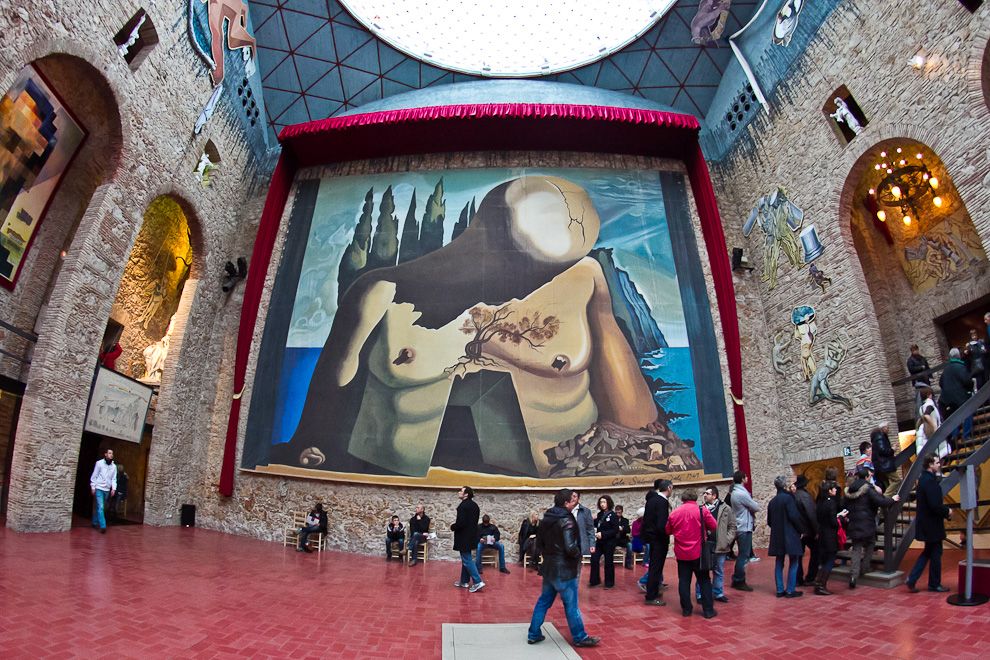
“The museum will not disappoint anyone,” insisted the artist. Photographs have one advantage: they are better than the original work. People will be disappointed when they see the originals.”
The dream of a museum forced Salvador Dali to make concessions. He nevertheless handed over the original paintings to the museum. On October 13, 1970, they were finally able to begin reconstruction.
The best excursions to the Dalí Museum
Dalí Museum decoration in Figueres
Pop Art has triumphed in the design of the Dalí Museum, this building is unmistakable!
- Emilio Pérez Pinheiro was commissioned to create the roof over the museum stage and work began on January 1973 years old.
- The architect was inspired by the ideas of Richard Fuller, who used steel and glass in his works.
- 1984 was marked by the appearance of loaves of bread on the walls of the Salvador Dali Museum that had grown.
- The calculation was based on the association with the mansion with shells Cassa de Las Conchas in Salamanca and other similar buildings.
In Cadaques, Spain, Dali has already used this technique in the house he built, emphasizing his attachment to bread.
“Bread has become one of the long-standing objects of fetishism and obsession in my works, it is the number one to which I was most faithful,” said Salvador Dali.
Giant eggs complete the exterior of the unusual building of the Dali Museum. Again, for Dali, this image was also associative, he often used it in his performances, paintings, actions. The Ampurdan eggs used in the construction of the Salvador Dali Museum in Figueres symbolize not only food, but also luxury and wealth.
Galatea Tower
Galatea Tower
In 1983, the neighboring house became part of the museum, it was in it that the annex, now known as the Galatea Tower, was located.
The Galatea Tower, which became the residence of Salvador Dali, later turned into his tomb, in which he was buried on January 25, 1989.

The dying wish of a genius came true – to stay forever next to his offspring. The adjacent building was acquired after the death of the artist by the Gala Salvador Dali Foundation.
Jewelry collection for Owen Cheatham
Since 2001, this building has housed a jewelry collection designed for Owen Cheatham, which is a magnificent example of another facet of the outstanding Dalí’s talent. The idea of the quixotic great Spaniard was in the words: “I want my museum to be a single block, a labyrinth, a huge surrealistic object. It will be absolutely a theatrical museum. Those who come here will leave feeling like they’ve had a theatrical dream.”
Spain is justly proud of Dali’s genius, so the Salvador Dali Museum in Figueres, not far from Barcelona, beckons and beckons new tourists to plunge into the world of surrealism and theatricality of the world.
Collection of works in the Dali Museum
The Salvador Dali Museum has a lot of his works.
- “The Phantom of Sexual Attractiveness” (1932)
- “Portrait of Gala with two lamb ribs balancing on her shoulder” (1933)
- “Basket of bread” (1945)
- Galatea with Spheres (1952) and many other works by the author
The Dalí Museum also recreates some of the ideas of his performances as exhibits:
- sculptures
- 3D images
- a room with the face of Mae West (A very unusual place, you can see Dali’s idea only by climbing to the height of the stairs in the room) and other very unusual works of the great Catalan
Face of Mae West, Dalí Theater Museum in Figueres
The journey from Barcelona to this unusual museum will take very little time. But will allow:
- to become part of the great masquerade conceived by the Spanish artist
- plunge into the theater world
- join at least a little bit in the world of an outstanding provocateur and conceptualist
The Salvador Dali Museum will not disappoint any of its visitors.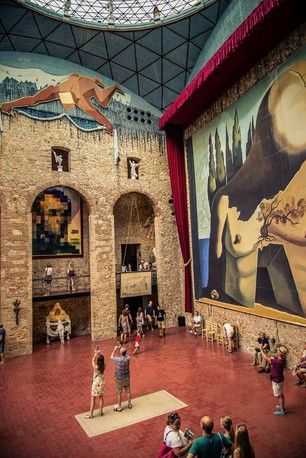
You can book a tour of the Dali Theater Museum here .
The cities around Barcelona are undoubtedly an indispensable part of Spain. And they are worth a visit, and Figueres – without a doubt!
Where is the Dali Theater Museum
Plaza Gala Dalí, 5, Figueres
You can view the best hotels nearby using the link on Booking.com.
How to get to the theater of the Dali Museum
By train:
- Travel time from Barcelona Central Station to Fegueras is between 1.5 and 2 hours.
- The cost of a round-trip ticket will cost approximately 24 euros per person.
- Tickets can be purchased on the official website renfe.com
Entrance to the Salvador Dali Museum
Adult ticket – 16.
Buy tickets to this museum in advance to avoid long lines at the entrance. You can do it on the link on the official ticket platform.
You can book a tour of the Dali Museum Theater here .
Opening hours of the Dalí Museum Theater in Figueres
- July 1st to September 30th
- Open daily from 9:00 to 20:00
- August 1st to 31st
- Opening hours: daily from 9:00 to 20:00 from 22:00 to 1:00
Location of Salvador Dalí Museum Theater in Figueres
- How to avoid queues at Barcelona attractions. Tickets for the Sagrada Familia and Park Güell skip the line.
-
How not to be deceived by local taxi drivers. Order a taxi in advance with fixed rates online. The most reliable service for ordering a taxi is KiwiTaxi .


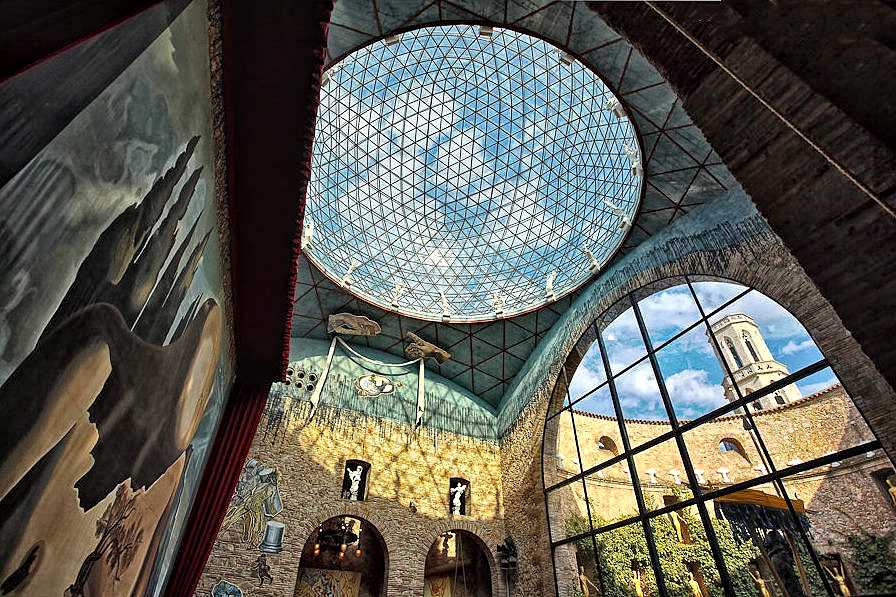 org
org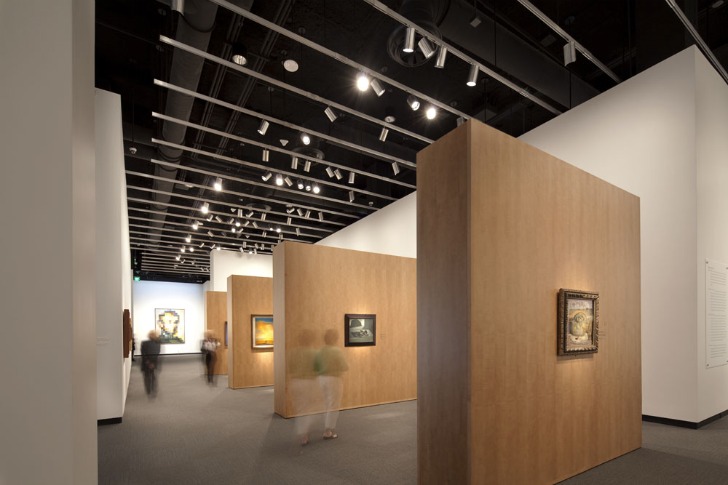 And in February 1939, it was set on fire by soldiers of the National Guard.
And in February 1939, it was set on fire by soldiers of the National Guard. 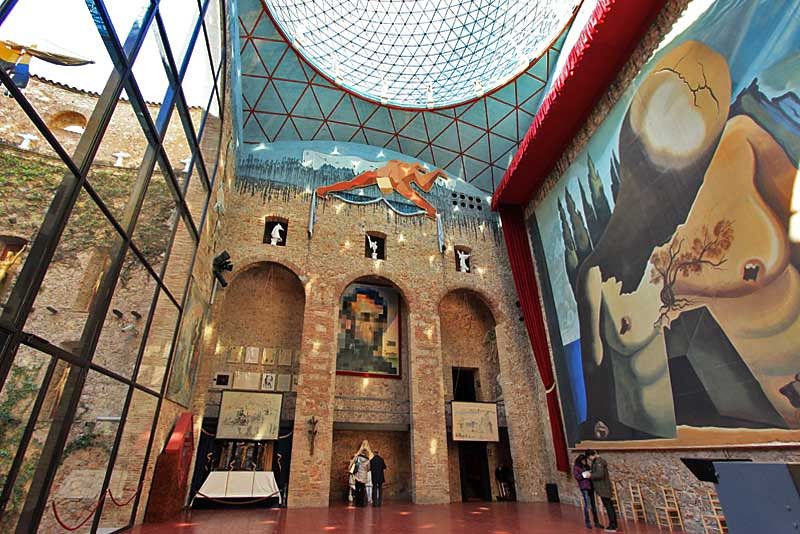


 The National Museum of Catalan reserves paintings, statues, drawings and photographs with narratives telling of culture, history, and heritage. Different eras of the evolution of art are stored and preserved inside the ornate walls of this Museum of Contemporary Art.
The National Museum of Catalan reserves paintings, statues, drawings and photographs with narratives telling of culture, history, and heritage. Different eras of the evolution of art are stored and preserved inside the ornate walls of this Museum of Contemporary Art. 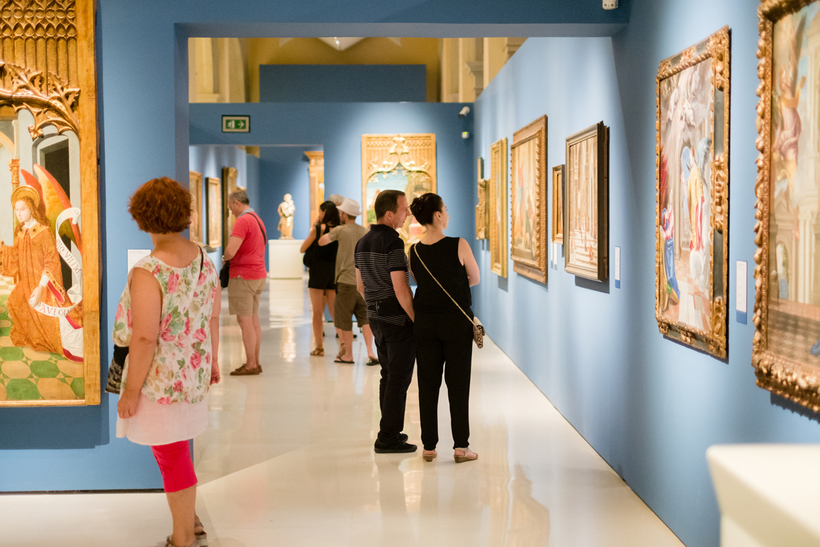

 This segment of the Museum is a real treasure chest full of doubloons.
This segment of the Museum is a real treasure chest full of doubloons. The exquisite pieces include Romanesque murals and Gothic pieces. This lover of archeology and art has built quite an impressive collection which will surely enthrall you all.
The exquisite pieces include Romanesque murals and Gothic pieces. This lover of archeology and art has built quite an impressive collection which will surely enthrall you all.
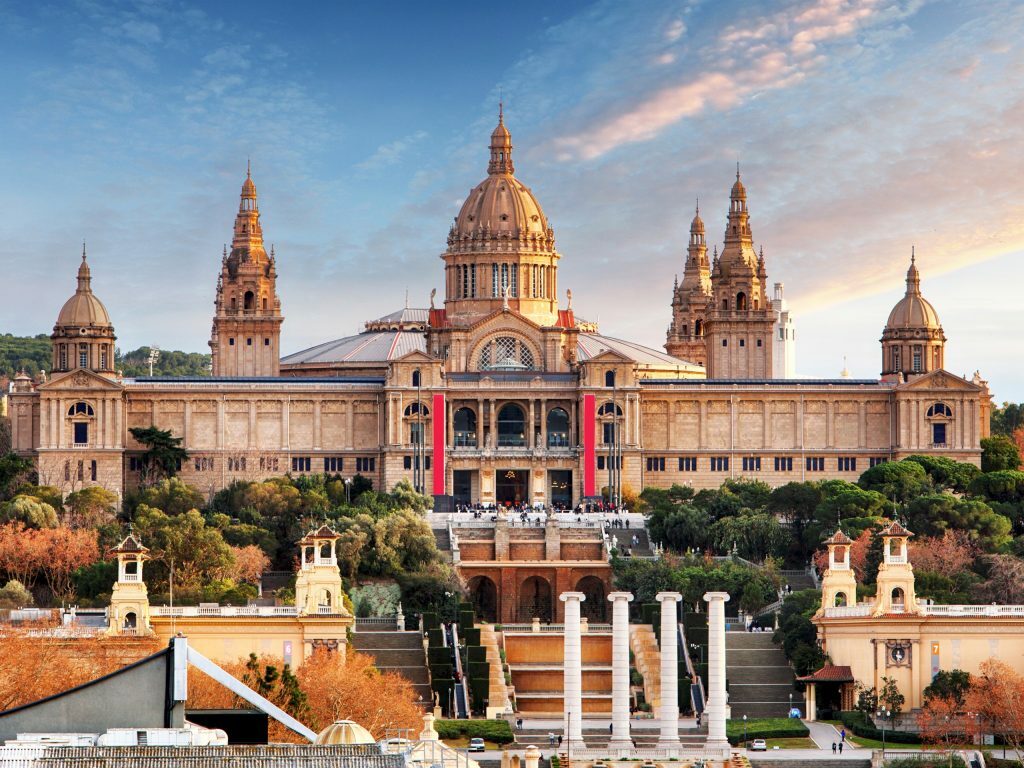 By taking Metro lines 1 or 3 you can head to the Las Arenas shopping center through Espanya. After a short walk, you can climb the escalators to the Palau Nacional.
By taking Metro lines 1 or 3 you can head to the Las Arenas shopping center through Espanya. After a short walk, you can climb the escalators to the Palau Nacional. Hop-On Hop-Off tours give you a lot of flexibility to explore the attractions of Barcelona. You can book these tours online at Barcelona-tickets.
Hop-On Hop-Off tours give you a lot of flexibility to explore the attractions of Barcelona. You can book these tours online at Barcelona-tickets. Food around and you can carry around €20 for a proper meal. The Gift Shop makes for a good splurge time while you are there.
Food around and you can carry around €20 for a proper meal. The Gift Shop makes for a good splurge time while you are there. 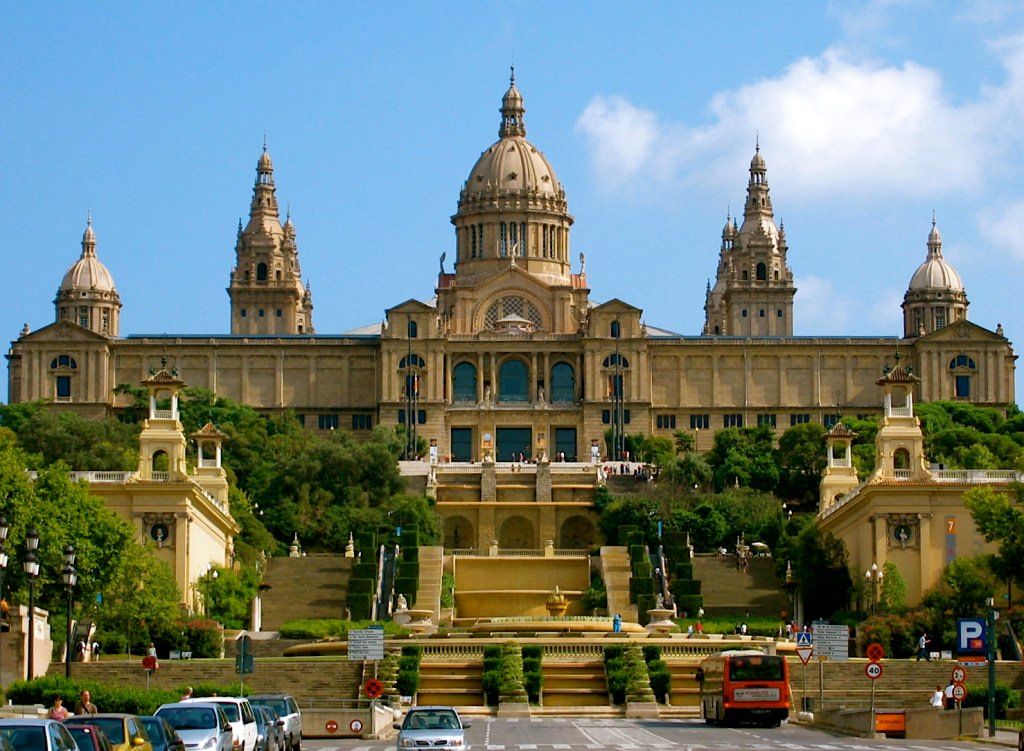 Which is the nearest train station from the Museum?
Which is the nearest train station from the Museum?  The entry ticket into the Museum costs €12 lasting for 2 days and valid until a month after the booking. The audio guide and rooftop point is €2 each.
The entry ticket into the Museum costs €12 lasting for 2 days and valid until a month after the booking. The audio guide and rooftop point is €2 each.  This is the Palau Nacional, where the Museu Nacional d’Art de Catalunya is located. Looking at the building, it is hard to believe that the monumental palace was never the residence of kings, and its history is relatively short, less than 100 years.
This is the Palau Nacional, where the Museu Nacional d’Art de Catalunya is located. Looking at the building, it is hard to believe that the monumental palace was never the residence of kings, and its history is relatively short, less than 100 years. 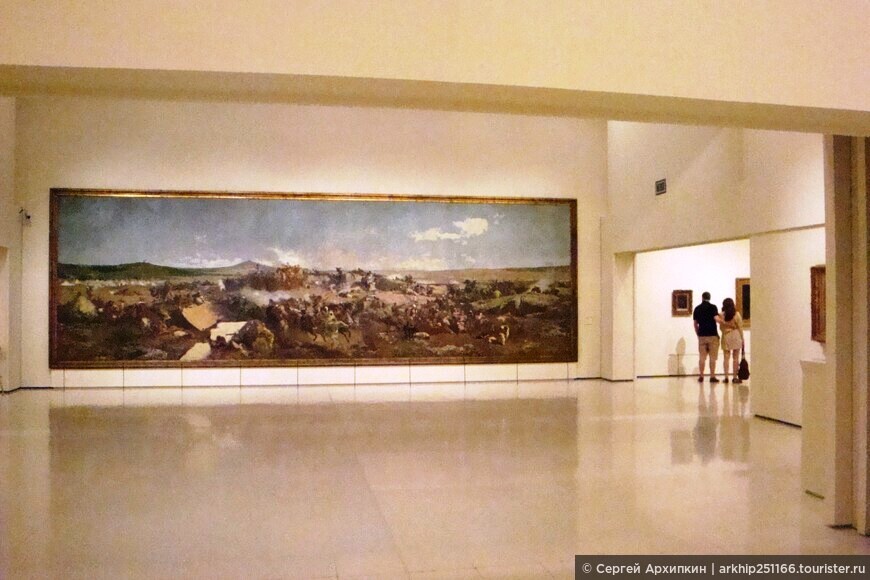 For the Olympic Games 19For 92 years, the palace was carefully restored, it was then that he acquired a well-known appearance. And in 2004, all its sections and departments were opened with the main collections of cultural treasures.
For the Olympic Games 19For 92 years, the palace was carefully restored, it was then that he acquired a well-known appearance. And in 2004, all its sections and departments were opened with the main collections of cultural treasures.  It is easy to find the objects you need here: the presentation of the exhibits is exclusively professional. Such seemingly insignificant things as soft carpeting or comfortable temperature make acquaintance with art a real pleasure. This museum is the perfect place to ride out the midday heat for the benefit of the mind and joy for the heart. But if you want to carefully examine all the expositions, get ready to return again and again, because the area of the palace-museum is 31,000 square meters. m, and the number of exhibits exceeds 230,000!
It is easy to find the objects you need here: the presentation of the exhibits is exclusively professional. Such seemingly insignificant things as soft carpeting or comfortable temperature make acquaintance with art a real pleasure. This museum is the perfect place to ride out the midday heat for the benefit of the mind and joy for the heart. But if you want to carefully examine all the expositions, get ready to return again and again, because the area of the palace-museum is 31,000 square meters. m, and the number of exhibits exceeds 230,000! 
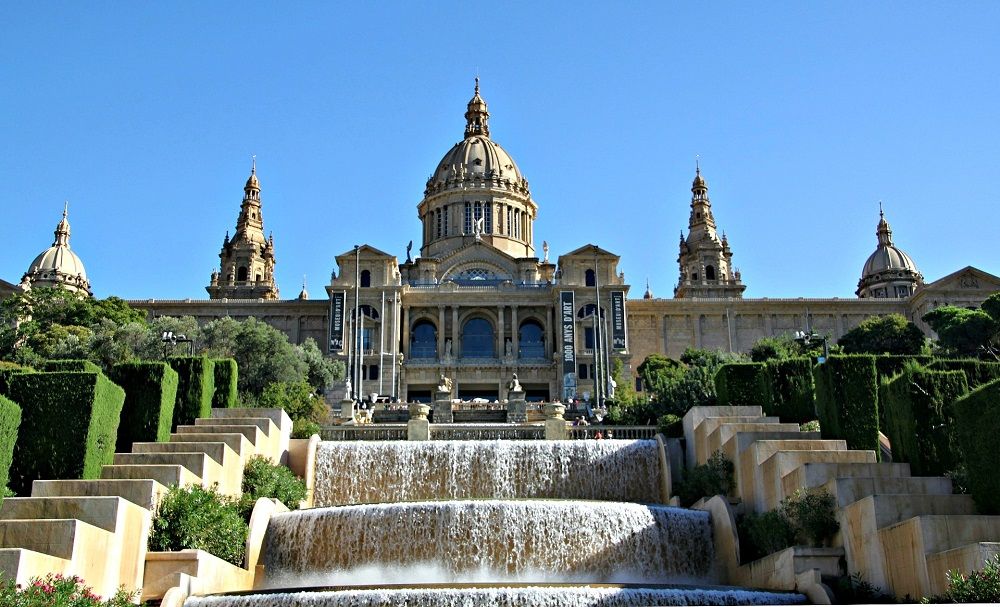 Connoisseurs will also be attracted by a rich library on the history of art.
Connoisseurs will also be attracted by a rich library on the history of art.  Here you can see samples not only of Catalan art, but also world-famous masterpieces of the Renaissance: works by Rubens, Velasquez, El Greco, Zurbaran, Goya, Cranach, Tintoretto and Canaletto. Part of the composition is made up of works from the collection of Francesco Cambo and Thyssen-Bornemisza.
Here you can see samples not only of Catalan art, but also world-famous masterpieces of the Renaissance: works by Rubens, Velasquez, El Greco, Zurbaran, Goya, Cranach, Tintoretto and Canaletto. Part of the composition is made up of works from the collection of Francesco Cambo and Thyssen-Bornemisza.  There is also an art history library.
There is also an art history library. 
 The main thing – it should be noted that the box office stops working half an hour, and the halls are closed 15 minutes before the end of the museum.
The main thing – it should be noted that the box office stops working half an hour, and the halls are closed 15 minutes before the end of the museum.  You can climb to the top of the mountain on city buses No. 55, 150, on the underground funicular from the Parallel metro station or in the cable car (Teleferico del Puerto), which connects Montjuic directly with the old port.
You can climb to the top of the mountain on city buses No. 55, 150, on the underground funicular from the Parallel metro station or in the cable car (Teleferico del Puerto), which connects Montjuic directly with the old port. 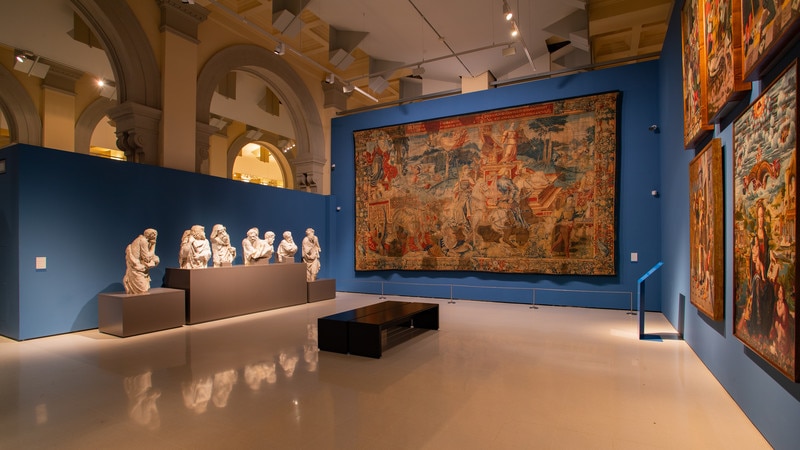 Stunning light and music performances gather a lot of spectators in the evenings on certain days of the week, according to the schedule, throughout the year. The jets hit dozens of meters up, and nine spotlights, installed in the palace, according to the number of letters in the word “Barcelona”, color them in different colors. By the way, several times a year, anyone can see the underground “life” of the fountain, hidden from view, during citywide Open Days. On such days, you can visit the museum itself for free.
Stunning light and music performances gather a lot of spectators in the evenings on certain days of the week, according to the schedule, throughout the year. The jets hit dozens of meters up, and nine spotlights, installed in the palace, according to the number of letters in the word “Barcelona”, color them in different colors. By the way, several times a year, anyone can see the underground “life” of the fountain, hidden from view, during citywide Open Days. On such days, you can visit the museum itself for free.  Of particular interest are the manuscripts of the autobiographical project, as well as postcards, books, clothes and toiletries of the heroine of the exhibition.
Of particular interest are the manuscripts of the autobiographical project, as well as postcards, books, clothes and toiletries of the heroine of the exhibition. 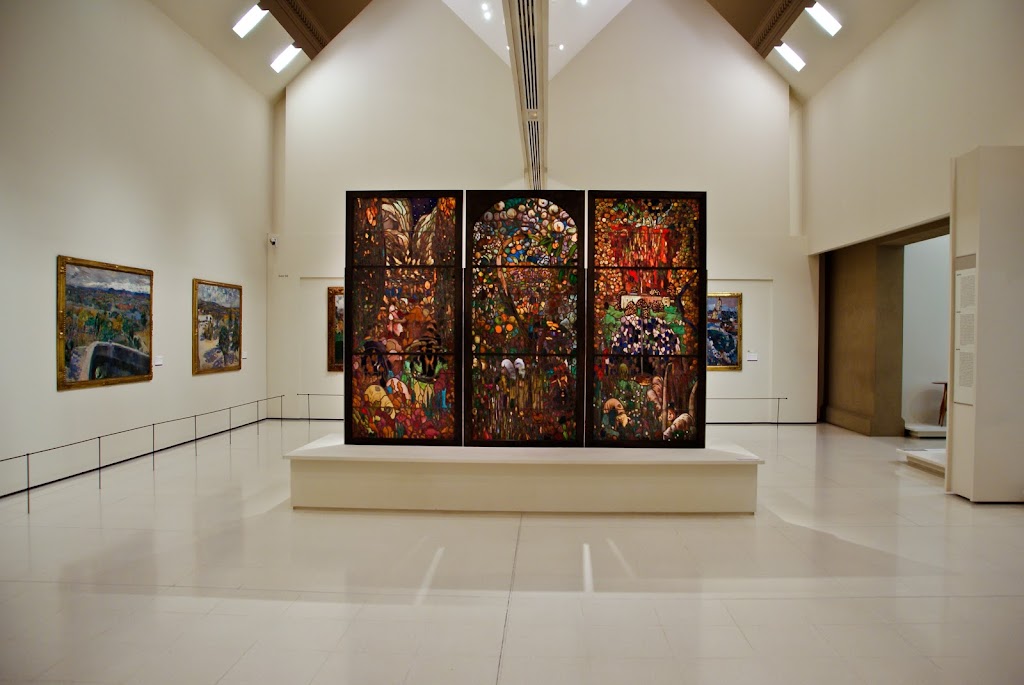

 30 a 18.30
30 a 18.30 .. molta sort!
.. molta sort!
 00 a 20.30
00 a 20.30 Spain in Russian
Spain in Russian
 A variety of cultural entertainment and excursions in Barcelona allows each tourist to find something to do in accordance with their interests and passions.
A variety of cultural entertainment and excursions in Barcelona allows each tourist to find something to do in accordance with their interests and passions. 
 There is also a small shop where you can buy various Egyptian-themed souvenirs, brochures with information about the museum and books about Egypt.
There is also a small shop where you can buy various Egyptian-themed souvenirs, brochures with information about the museum and books about Egypt.  16, 17, 22, 24, 28, 39, 43, 44, 45, 47.
16, 17, 22, 24, 28, 39, 43, 44, 45, 47. 


